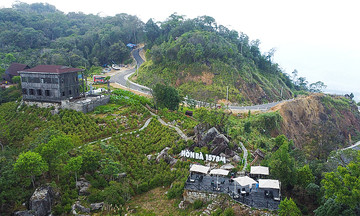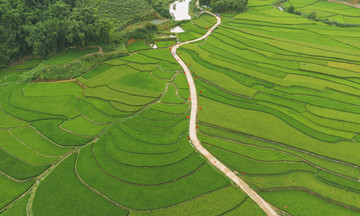 |
Alongside the refreshing vegetable dishes, the menu also features warm dishes rich in carbohydrates for a satisfying and nutritious meal. Steamed mugwort-wrapped mushrooms with sugarcane and rice serve as a main course. The dish combines the sweetness of sugarcane and rice with the fragrant aroma of mugwort. |
Ho Chi Minh City boasts 21 restaurants listed in the Michelin Guide's Bib Gourmand category for 2025, two of which are vegetarian. Among them, Hum Garden has earned this distinction for three years running.
Michelin describes the restaurant as nestled on a quiet street in a residential area away from the city center, featuring a spacious courtyard, a veranda adorned with lush greenery, and rustic interiors. Hum Garden serves vegetarian dishes using fresh, organic produce sourced from local farms, prepared with a modern twist.
Tran Thai Bao, Hum Garden's culinary director, explains that the restaurant frequently develops menus inspired by seasonal produce from across Vietnam. For the summer menu, Bao and his team have incorporated ingredients typically enjoyed individually, like rambutan, wax apples, arrowroot, and flamboyant flowers.
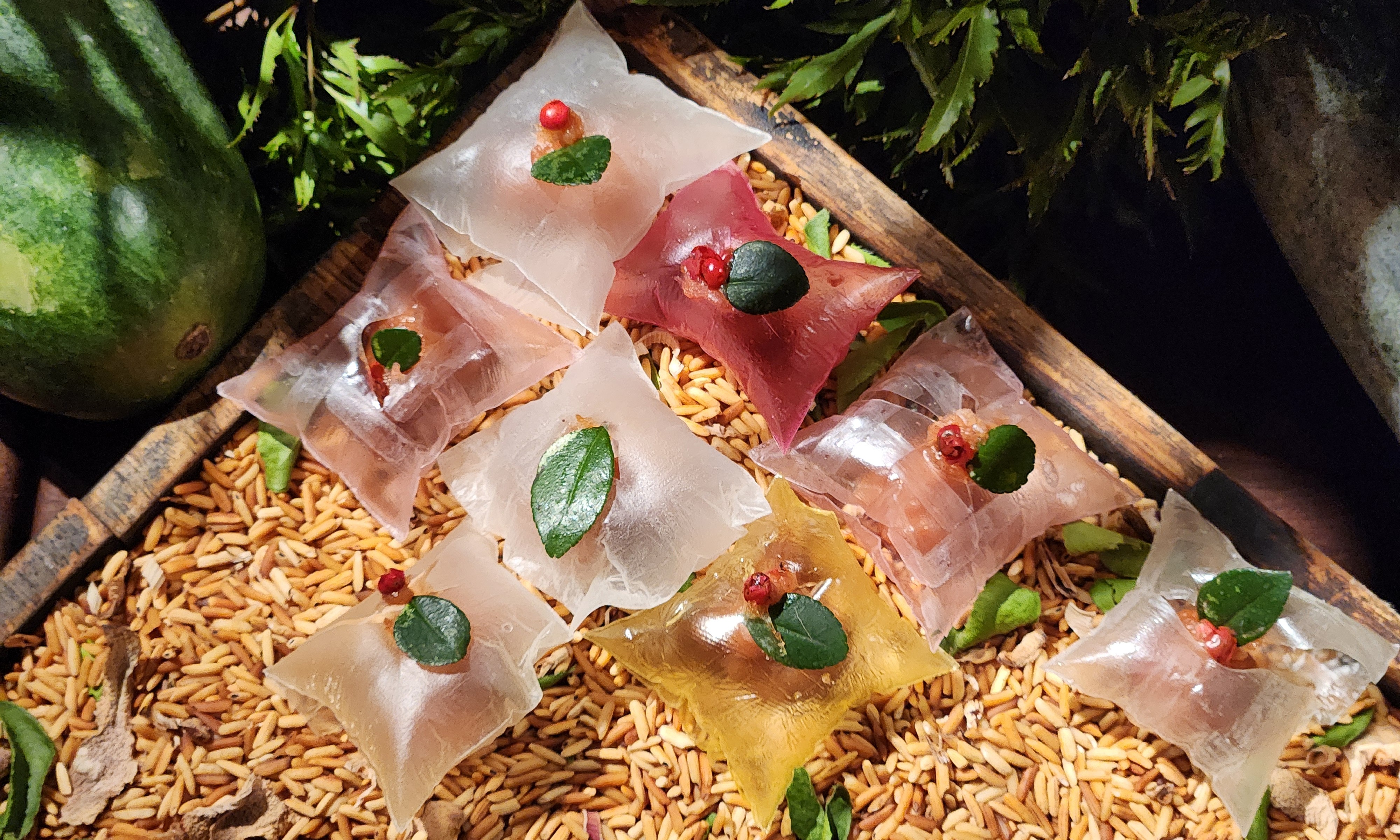 |
The restaurant's summer vegetarian menu also features a cooling soup made from arrowhead, artichoke flowers, and lotus root. The combined ingredients create a naturally sweet soup without added seasoning. |
The vegetable rice paper rolls appetizer features a shell made from rice paper dyed with vegetable colors, filled with wild garcinia fruit. The garcinia tree, a woody plant reaching 6-7 meters tall with a wide canopy, bears fruit related to the mangosteen, often called wild mangosteen.
Garcinia fruit is typically found in the mountainous forests of central Vietnam, particularly in the Tra Bong mountain region of Quang Ngai province. The tree only fruits during the three summer months, with locals and chefs drying the ripe yellow fruit for later use.
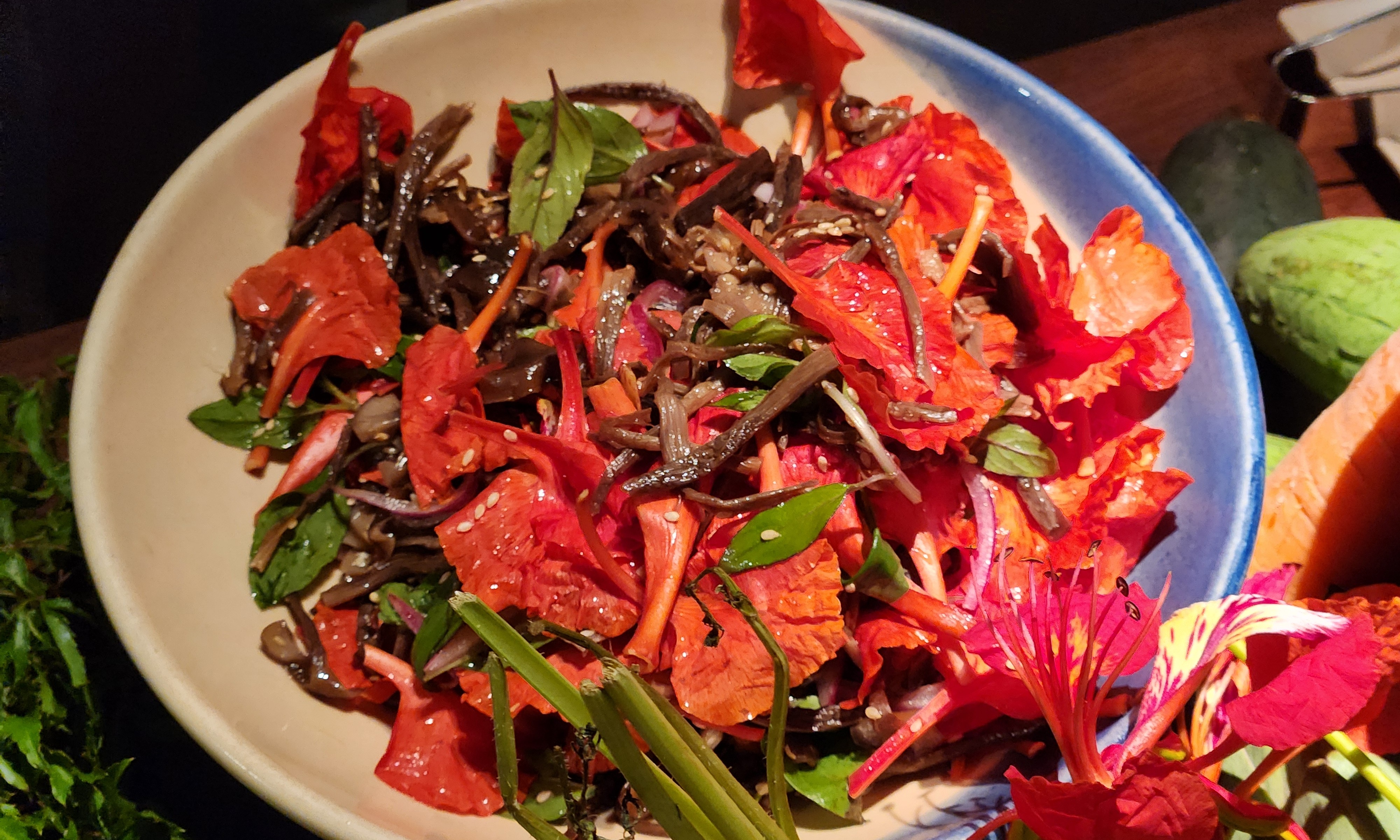 |
Summer fruits also find their way onto the menu. Diced ripe papaya and soursop, seasoned with salt and lemongrass, and topped with foam, create a dish characteristic of southern Vietnamese flavors. The papaya, harvested from Can Tho, offers a rich sweet and sour taste, while the soursop from Tay Ninh has white flesh, juicy texture, and a mild sweet and sour flavor. |
A quintessential summer ingredient featured on the menu is flamboyant flower petals, inspired by the flamboyant flower salad popular in the Mekong Delta region of southern Vietnam.
The restaurant offers a unique twist, combining fresh flamboyant petals with crown tip coral mushrooms sourced from a farm in Thai Nguyen. Chefs consider this mushroom a valuable medicinal ingredient due to its rich nutrients. The dish balances the tartness of the flamboyant flowers with the mild sweetness and aroma of the mushrooms.
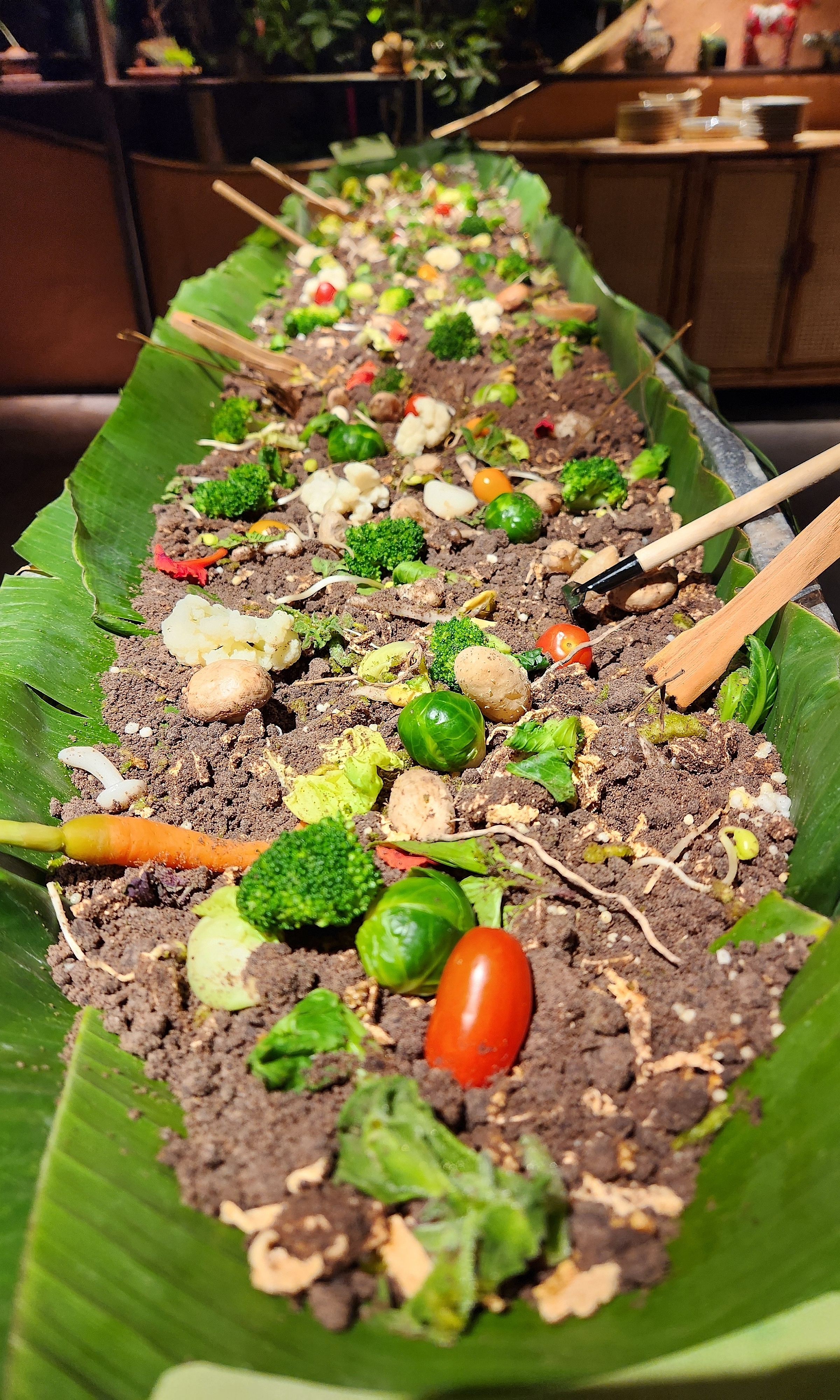 |
In addition to combined ingredient dishes, the restaurant serves fresh, uncooked vegetables presented as a miniature garden in a boat. The chef explains that the "soil" and "roots" are made from cocoa powder and bread, served with fresh vegetables like cherry tomatoes, bean sprouts, cauliflower, arrowroot, and baby cabbages.
The highlight of this fresh vegetable boat is the arrowroot harvested from Go Cong. This aquatic tuber, typically found in marshy areas, is round with a white, sweet, and crispy flesh.
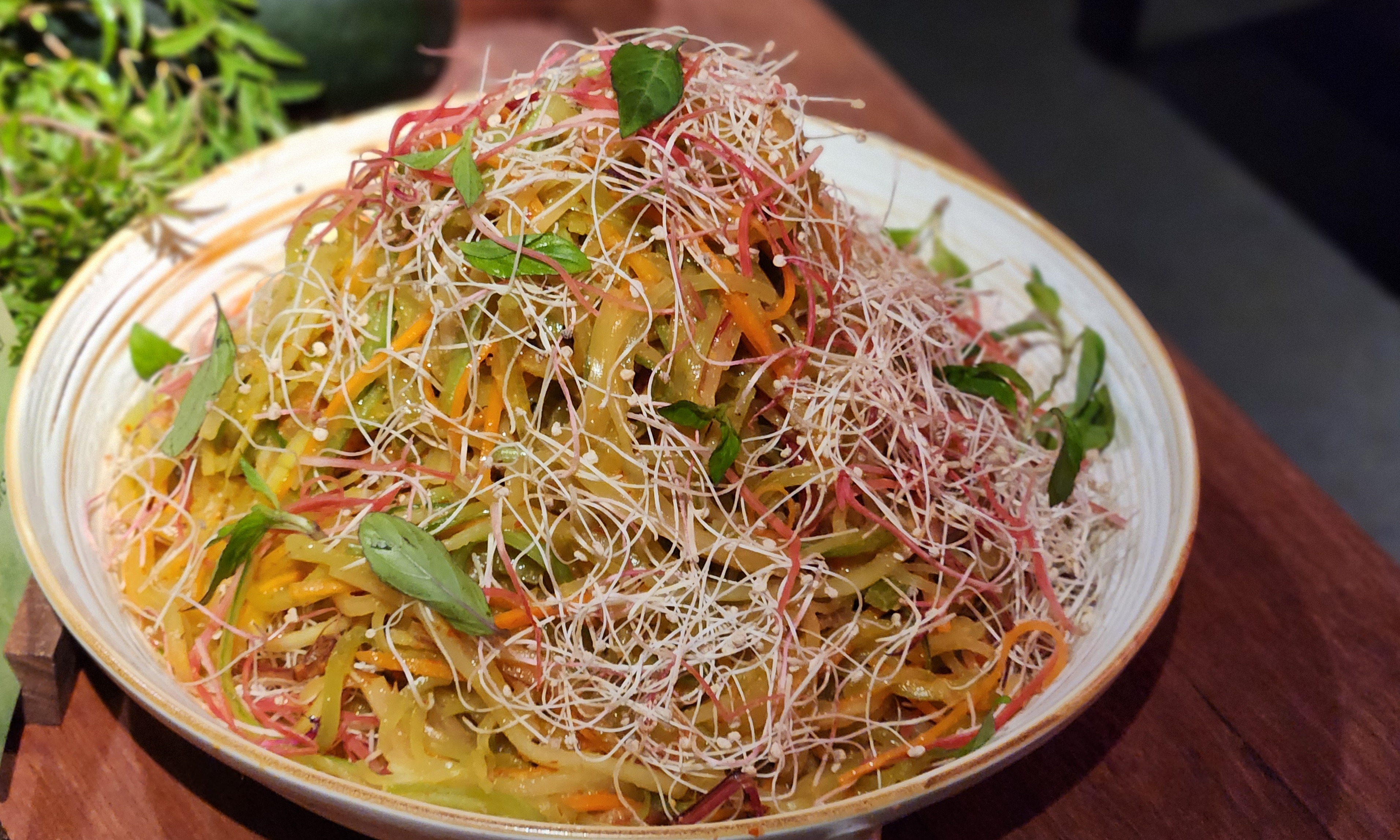 |
Another regional ingredient featured on the menu is mangrove apple blossoms from the Mekong Delta, mixed with Lao Cai spring shoots. The tender part of the spring shoots, rich in nutrients and offering a sweet, crispy flavor, balances the slightly sour taste of the mangrove apple.
Mangrove apple trees typically flower and fruit from March to June on the lunar calendar. After the flower stamens bloom, only the stamens and fruit are harvested for culinary purposes, leaving the pistils to pollinate the growing fruit.
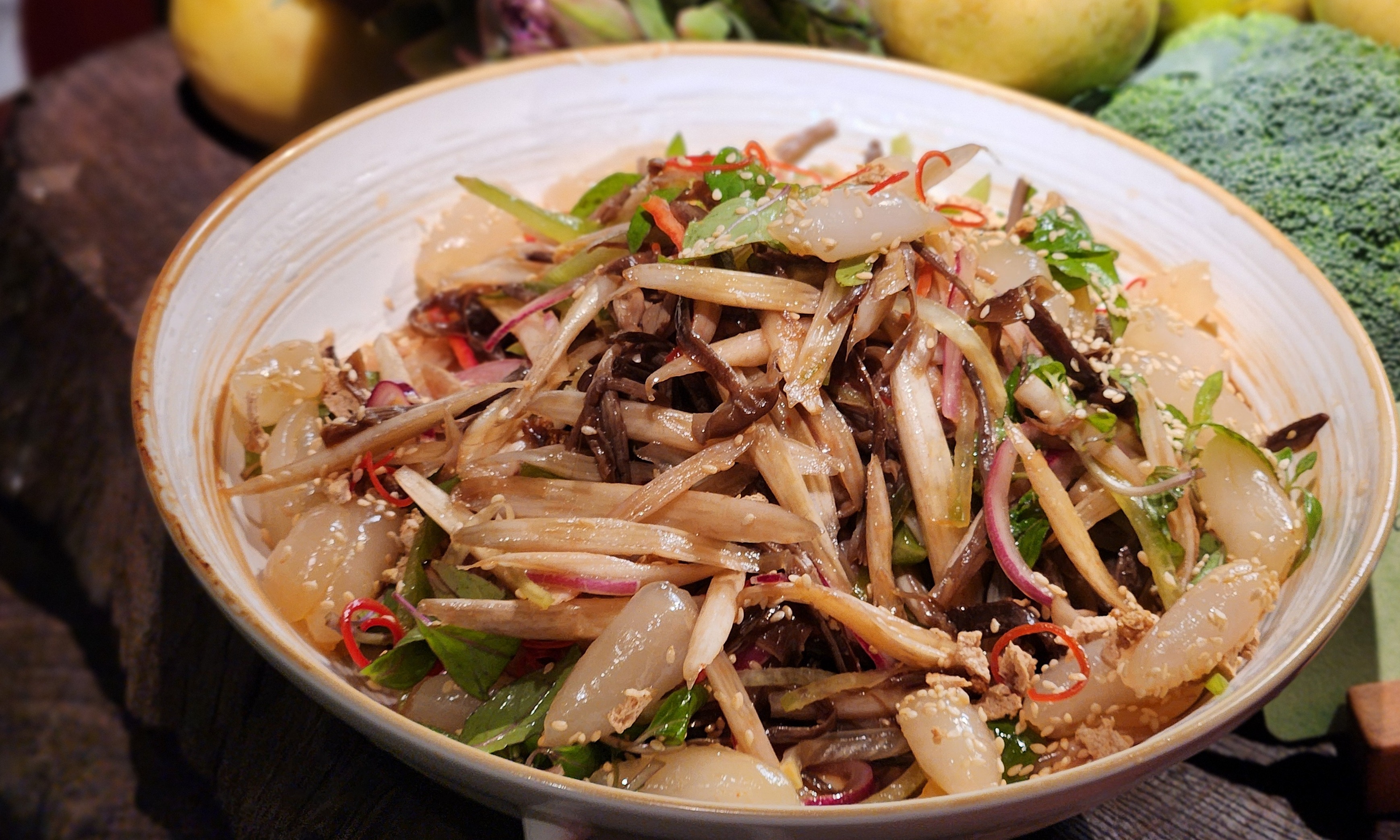 |
Another dish characteristic of the southern Vietnamese summer is the wax apple and bamboo shoot salad, featuring ingredients available only from May to September. The restaurant sources wax apples from Vinh Long, known for their mildly sweet and sour flavor, opaque white flesh, and juicy texture. The highlight of the dish is the thinly sliced bamboo shoots from a spineless, flexible bamboo variety that grows under dry leaves or in rock crevices.
"The salad offers a blend of sweet and sour flavors, with the bamboo shoots adding a distinctive aroma, perfect for hot days," comments Minh Hoa, a diner from Ho Chi Minh City.
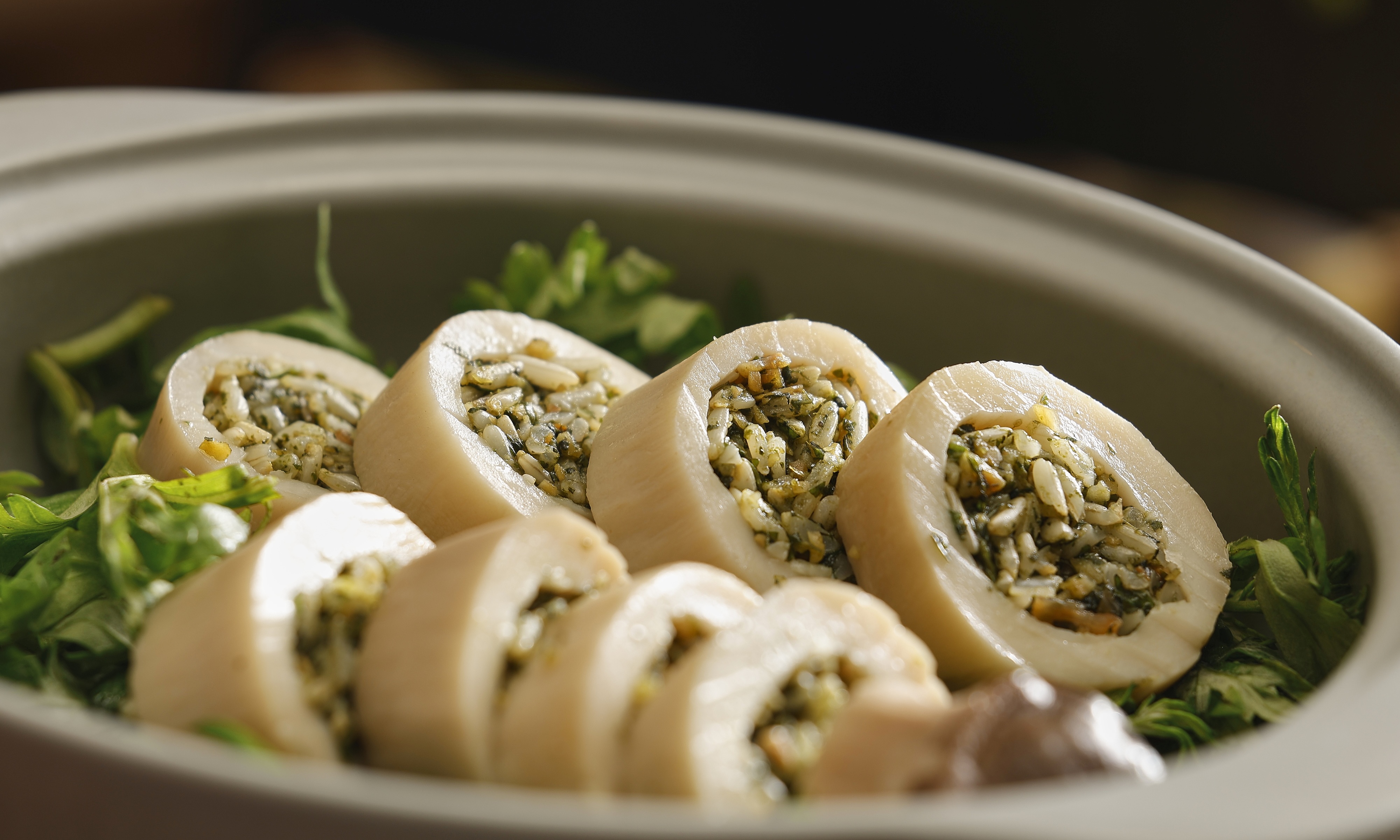 |
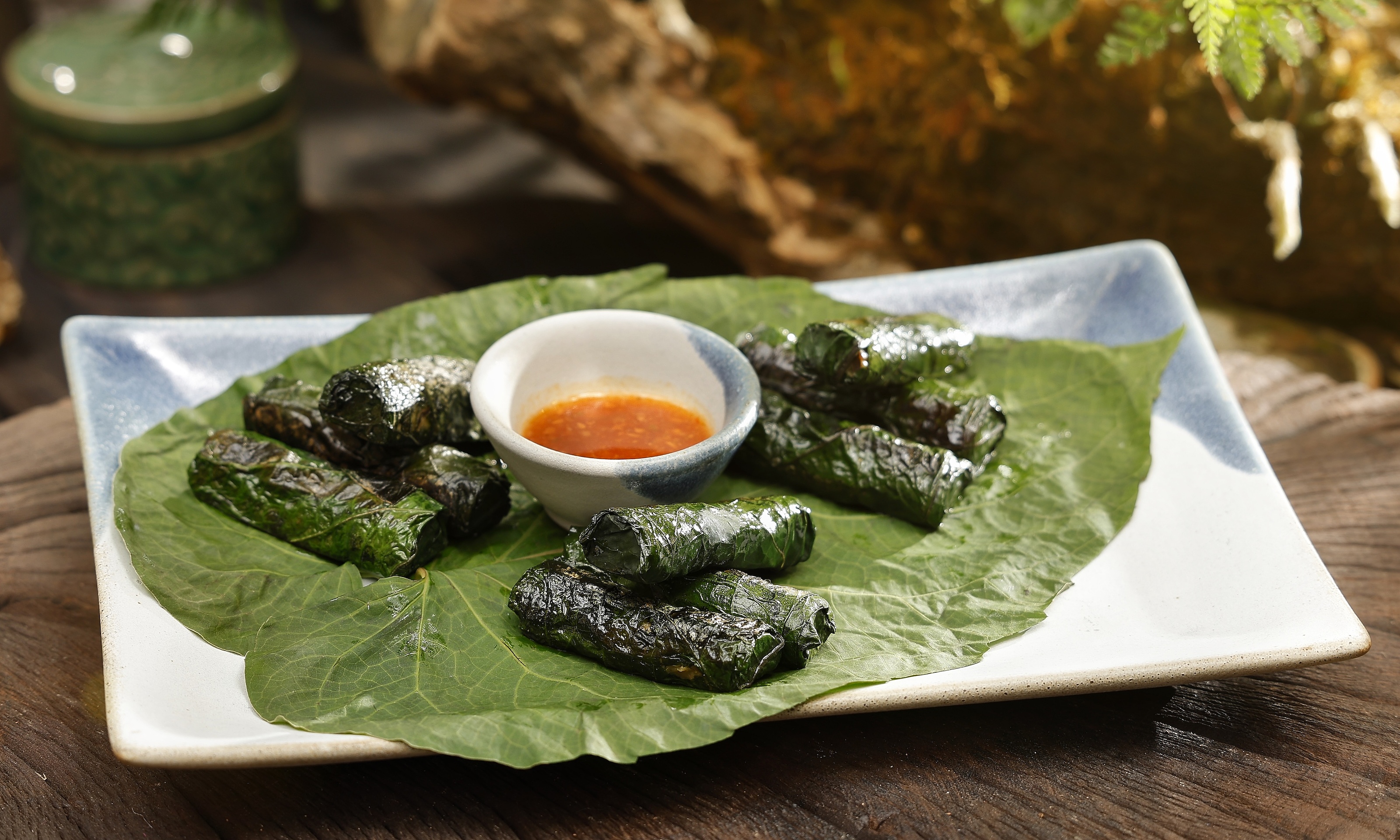 |
Another main course, easily mistaken for wild betel leaf rolls, is the grilled doi leaf-wrapped mushrooms, inspired by the flavors of the northwestern mountains. Doi leaves, an aromatic herb widely cultivated in the northwest region, are used for wrapping, while ground doi seeds are used as a dipping sauce.
Culinary artisan Bui Thi Suong notes that while each region traditionally used locally available ingredients, chefs now boldly combine ingredients from different regions, respecting seasonality to create new culinary experiences.
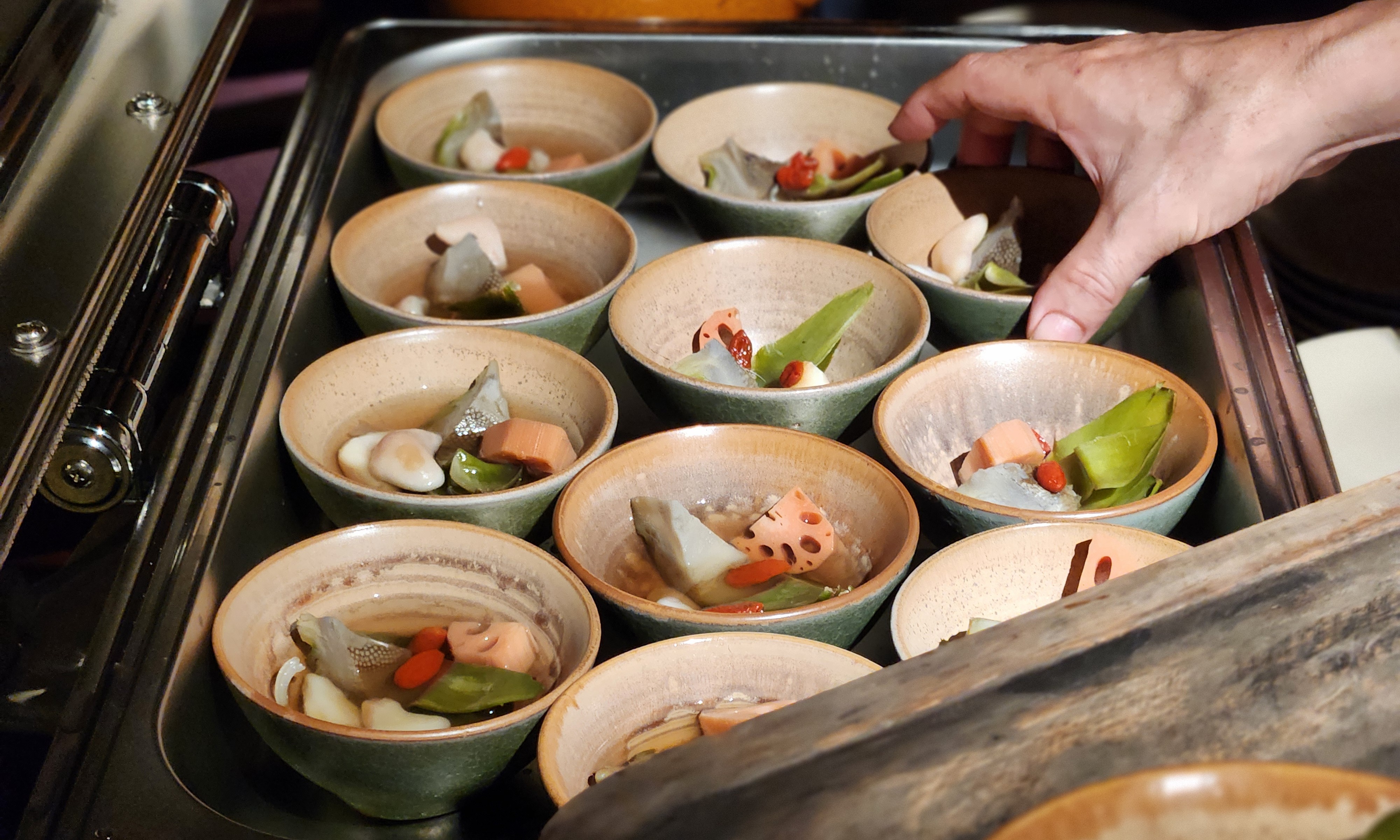 |
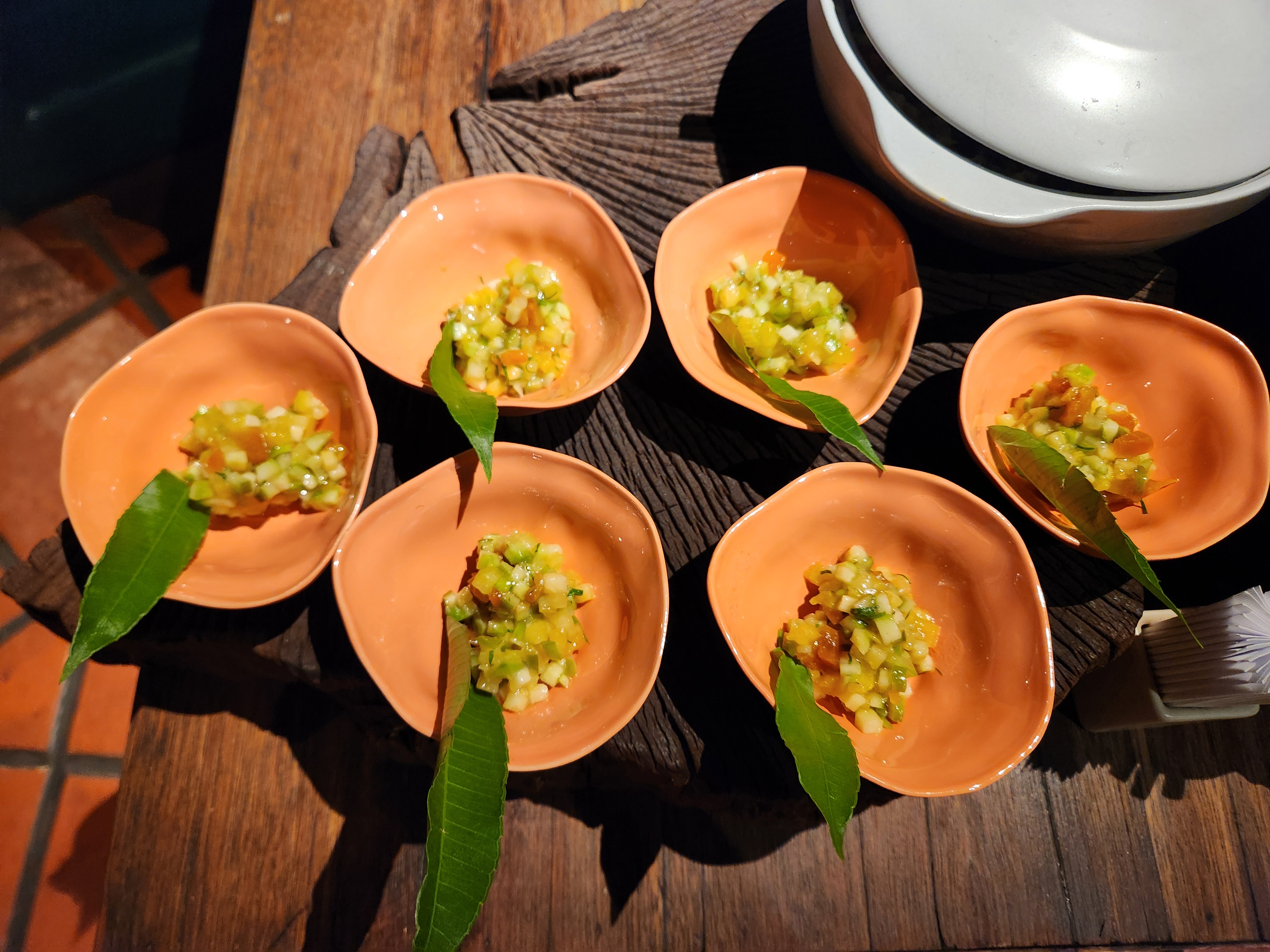 |
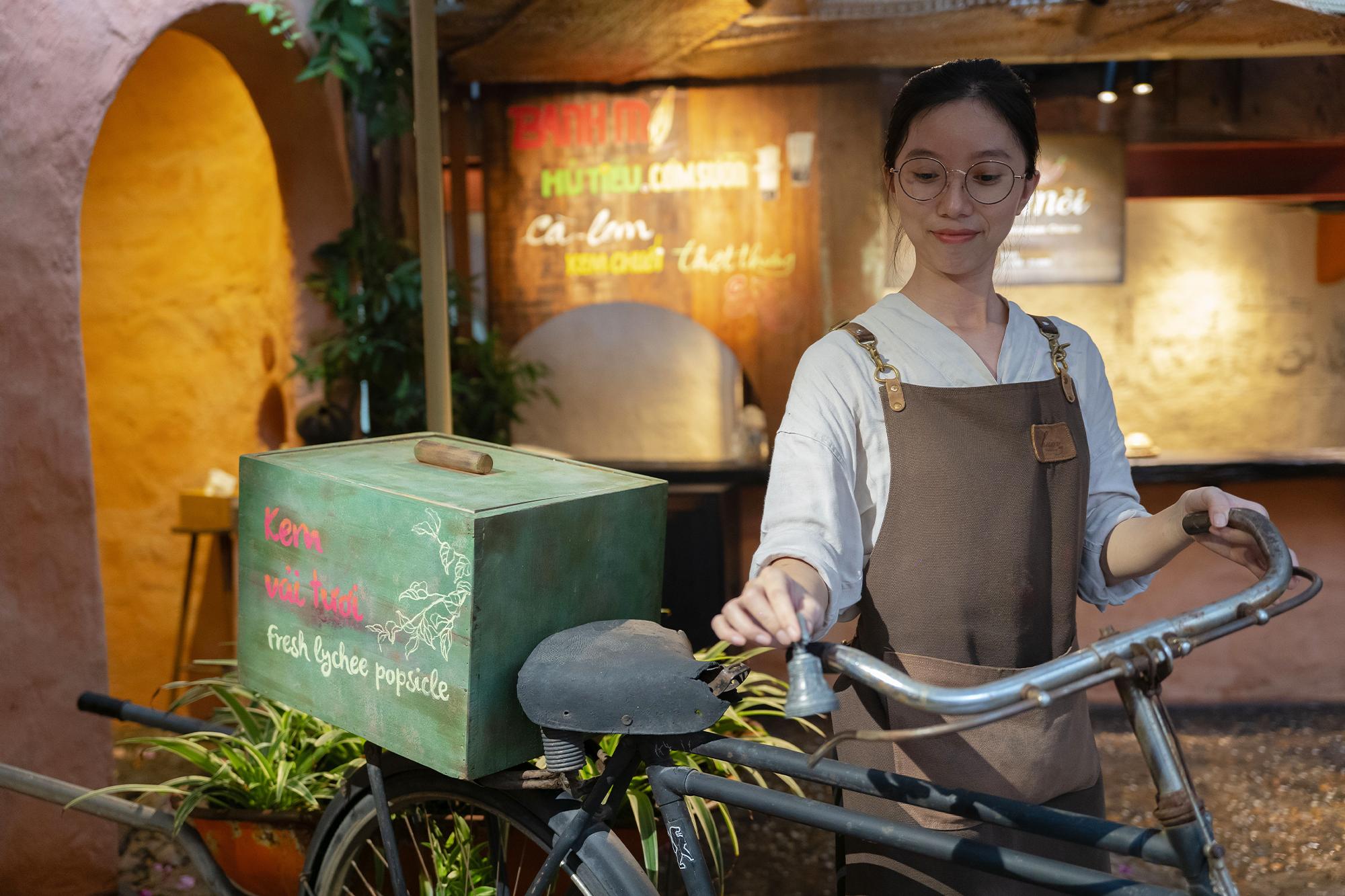 |
Fruits are also featured in desserts, with Bac Giang lychees transformed into a refreshing ice cream.
These seasonally inspired dishes are not always part of the regular menu. Each season, the restaurant creates new dishes based on regional ingredients.
"Dishes favored by many diners will be considered for inclusion in the fixed menu," says the head chef.
Article and photos: Bich Phuong



